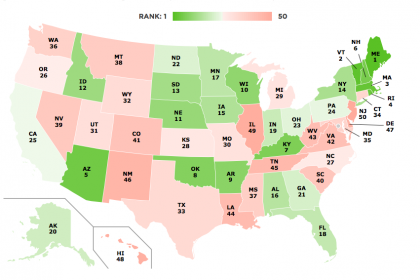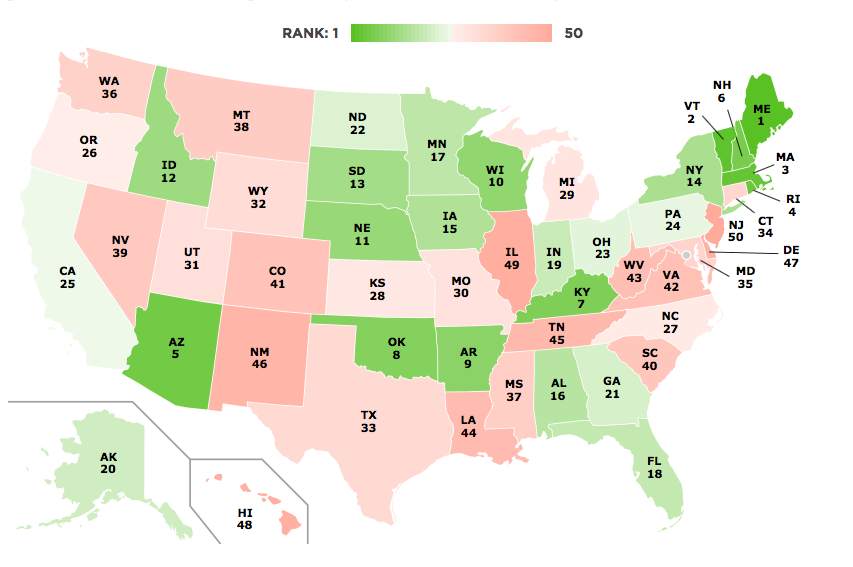
From our friends at Farm to Institution New England (FINE)
Last week, the Union of Concerned Scientists (UCS) released a new 50-State Food System Scorecard, which ranks U.S. states based on farm and food health, sustainability and equity. The scorecard highlights areas of success and potential improvement for states – and it can help food system stakeholders identify other states that are doing well in areas where they may lag behind. New England is a standout leader, claiming six of the top 10 overall scores. Farm to institution activities also got a nod; in calculating a state’s final score, farm to school grant funding, sustainable food systems research and institutions, and the number of food policy councils all contributed.
As Marcia DeLonge, a UCS food and environment senior scientist, explains in their blog post, there were multiple motivations behind creating the scorecard. One was a desire to address the many challenges that continue to plague our food system. Equally important was the opportunity to showcase innovative solutions to issues like climate change, food insecurity, and land access for beginning farmers. In line with UCS’s mission to use science to inform practical solutions to social and environmental problems, the interactive scorecard platform shares local, regional, and federal food policy recommendations.
New England: Successes and Opportunities
According to the Food System Scorecard rankings, New England is a regional leader in healthy and sustainable food systems. After categories were averaged to an aggregate score, all six New England states ranked in the top 10. Vermont, Maine, New Hampshire, and Massachusetts took the first four spots, respectively.

Figure 1. Average score across 10 food system categories. Source: Union of Concerned Scientists. 50-State Food Systems Scorecard. Map 11: Average of all categories.
In every category, New England has at least one state in the top five. The region fared particularly well in regard to sustainable farming practices; all New England states were among the 14 highest ranked in the conservation practices and farm investment categories, including the number one slot for Vermont and Rhode Island, respectively.
Other categories showed more variation. For example, while Vermont was ranked first for food infrastructure, New Hampshire was 34th for the same category. In contrast, New Hampshire ranked second for reduced ecosystem impacts, and Vermont was 24th. This variation represents diversity within our region and the unique challenges that each state faces. However, it also presents a huge opportunity for New England states to learn from each other and implement strategies that have worked for their neighbors. Continued regional collaboration is a key component in moving towards improved food system sustainability.
In farm to institution-related categories, a few New England states stood out. For the food investments category, a higher amount of farm to school grant funding per 100 students increased a state’s score. From fiscal years 2013 to 2017, New England states received a total of $2.6 million in USDA Farm to School grants. These funds provide schools with the resources needed to increase local food purchasing and implement agriculture-based curriculum. In the food investments category, Vermont ranked second, followed immediately by Rhode Island, Maine, and Massachusetts.
Read the entire blog from FINE post here.
Farm to Institution New England is a six-state network of nonprofit, public and private entities working together to transform our food system by increasing the amount of good, local food served in our region’s schools, hospitals, colleges and other institutions. The FINE network consists of non-profit organizations, government agencies, institutions, foundations, farms, food distributors, food processors, food service operators and others.




